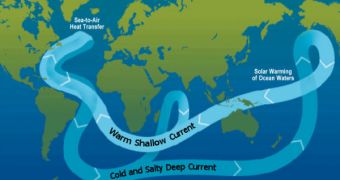China recently argued that Organization for Cooperation and Economic Development (OECD) countries should transfer about 1 percent of their GDP to developing nations, funds to be invested in clean technology and sustainable energetic practices. These sums of money would pave the way for a faster development of poor nations, as well as for the protection of endangered rain forests.
It's highly unlikely that this proposal be accepted by developed European nations and the US, as they view China as the main culprit in polluting the atmosphere with carbon emissions. However, Chinese officials argue, and in good point, that, over the last 150 years, it was Western countries that emitted enormous amounts of greenhouse gases into the air.
Another reason why this proposal will most likely fail is the current state of the economy, which accounts for more and more states giving up their “green” projects so as to avoid collapse. "If we go to citizens under the current circumstances and say 'I'm increasing your tax burden in order to pay for climate policy,' that might not go down very well," explained UN United Nations Framework Convention on Climate Change, Yvo de Boer.
In addition to China's ever-increasing expanse rate in the energy sector, India, Brazil and Japan are also registering high levels of carbon emissions, compared to 1990. In the case of Japan, the country now emits some 1.38 billion tons of gases, which have led to a 10 percent increase in emissions, as opposed to 18 years ago.
However, no matter what nations decide to do at the 2009 Copenhagen Climate Change Convention, the fact of the matter is that firm measures must be taken by all countries, so as to avoid floods, extreme weather events and other natural disasters. Hopefully, next year's meeting will see the creation of a detailed action plan, one that will successfully replace the Kyoto Protocol.

 14 DAY TRIAL //
14 DAY TRIAL //